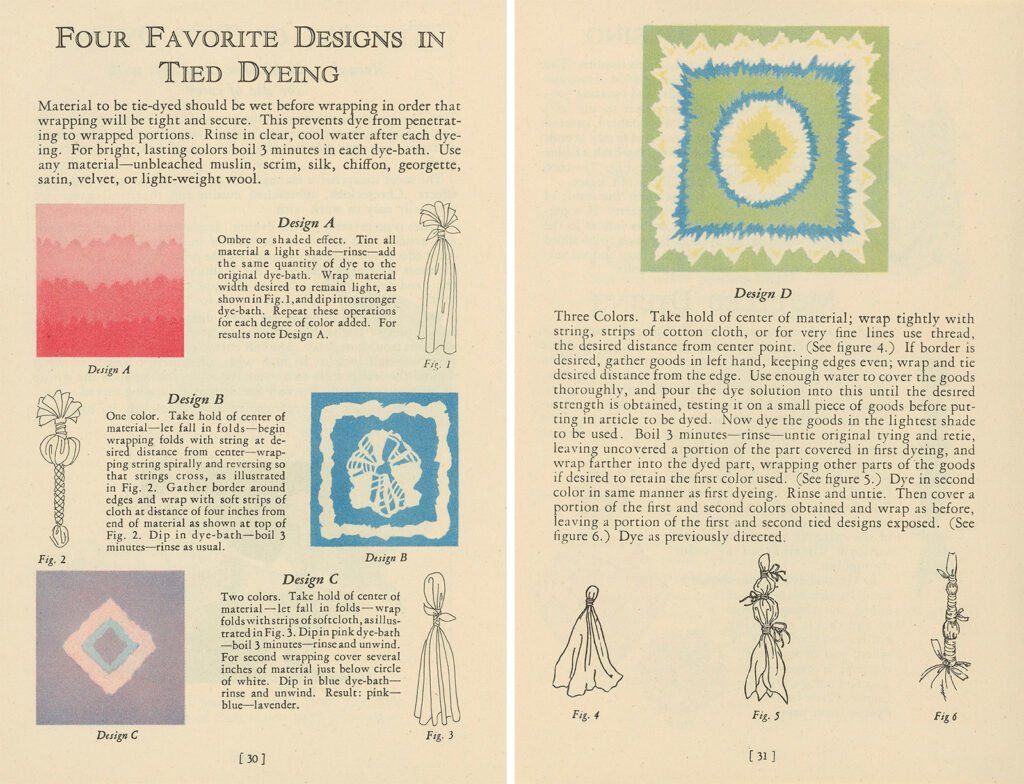Hate Fast Fashion? Tie Dye Day is Your Day to Celebrate!
Each April 30th we celebrate National Tie Dye Day. While it might get you thinking about Woodstock and the hippies of the 1960s, there’s a lot more to the tale of the tie dyed garment and a lot more to celebrate.
As a prime example, consider that tie dye fabrics really entered the American conscious in…what year?
Wait for it…what’s your guess?
How’s the Roaring 20s sound? Well, the age of The Great Gatsby, flappers, and bootleg liquor was also the time when the ancient art of tied dyeing made a broad appearance in America.
Just What is Tie Dyeing?
As the Science History Institute explains, “The essential elements are fabric, string, and colorful dye. Among the oldest techniques is bandhani, practiced for more than 4,000 years in South Asia. Bandhani textiles are produced by plucking fabric into tight, tiny knots before dipping it into dye vats, a method that produces exceptionally delicate and complicated patterns. Other, widely varied techniques of tie-dyeing were developed in Southeast Asia, South America, West Africa, and elsewhere.”
When did it begin to look like today’s boho favorite? It began in the early 1900s when an article in The Craftsman appeared. It outlined the basics of tied dyeing, and the author pointed out that it was doubtful that any commercial processes could compare with its beauty.
Sure, we’d been home dyeing our clothing and other textiles for a long time before the 20th century, but the dyes themselves often weren’t of great quality, nor did we think of using artful knots, strings, and other techniques to create patterns.
By the 1920s, though, direct dyes were available and created superior results, allowing everything from silk to wool to be transformed.
Tie-dyeing instructions from Marie Josephine Carr’s The Charm of Color, published by the Monroe Chemical Company, 1928.
And just like that, people could begin reusing and recycling garments and materials to refresh or update their wardrobes or decorate their homes. And at that same time, magazines began to show readers how to use different colors to make unique projects.
Today, tie-dyeing has evolved into a fashion statement associated with the 1960s far more than the 1920s, but it really deserves a second look.
How Tie Dyeing Can Help Defeat a Fast Fashion Habit
Why should we all take a harder look at tie-dyeing? Because of the plague of fast fashion.
Readily available items at cheap prices sound so appealing, but they are made at a tremendous cost to the planet and the people involved in making the items. Any fast fashion item is, quite simply, garbage. It is designed to be worn only a few times, laundered a few times, toast, landfill fodder, and trash. While we can go on and on about the toxicity of fast fashion, let’s leave it at this: avoid it at all costs.
Instead, consider the easy availability of high-quality dyes and all sorts of items that might be redeemed or individualized using the millions of tie-dyeing techniques.
For example, you have a t-shirt that fits and feels great but has old stains or discoloration. You decide to wear it only for chores and plan to toss it eventually. You think of running to the mall or heading online to replace it. Why? With some knowledge and practical skill, you can dye it a solid new color OR use different dyeing techniques to create something fashionable. Don’t forget you’ll also get to keep that shirt that’s broken in, comfortable, and an ideal fit.
Celebrate National Tie Dye Day All Year
Today is, as noted, National Tie Dye Day and a perfect moment to learn how to do some at-home tie dyeing for yourself. You can start with the most basic methods or do a deep dive into the artisanal styles that yield amazing outcomes. Some techniques can give you prints and patterns that look like high-quality woven or batik designs! You can use packages of basic RIT dye or investigate indigo dyes and the stunning results it yields.
The takeaway is simple: don’t rush out to buy new garments if you have items at home that you don’t wear because of stains or discoloration. Instead, celebrate Tie Dye Day all year by learning how to transform garments or household items with a batch of affordable dye and simple tie-dye techniques.
Foil the nightmarish goals of fast fashion producers and create a wardrobe with unique looks, beautiful colors, and no harm to the world around you! Below are some great ways to get started right away!
Get a Free Copy of “The Charm of Color,” a 1920s guide to dyeing, including tie-dyeing!
Martha Stewart Guide to Tie-Dyeing
Tie Dye for Beginners – A Full YouTube Channel dedicated to tie dye techniques
Read More about the History and Chemistry of Tie Dye:
Shop for Tie Dye Kits and Books*:
Some products may provide affiliate rewards.












